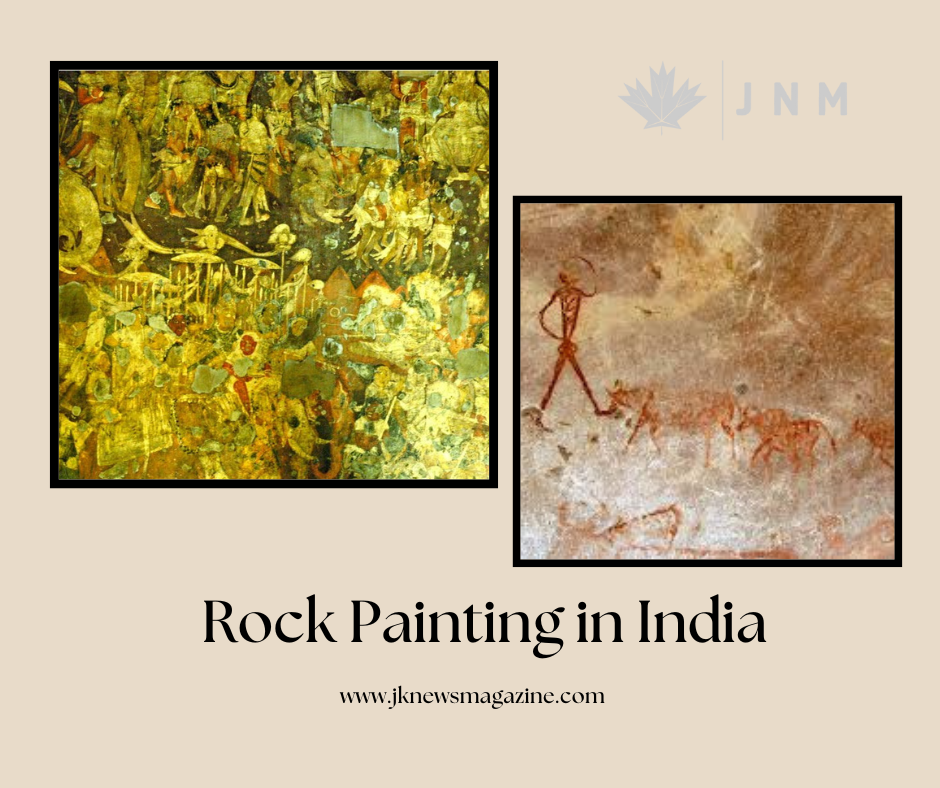Introduction to Prehistoric art Bhimbetka Cave Painting
Have you ever imagined a world without no language, no paper, no books, and no documents? Yes, this era is called prehistory or prehistoric. The excavation tells us about the different pottery, habitat, bones, tools, drawing and art on the walls. Paintings and cave art is the most common form of art used for their expression.
The upper paleolithic age saw the proliferation of artistic expression. The walls of the caves are filled with paintings and drawings of animals. The topics of these drawings were animal symbols, geometry designs, human symbols and activities. The earliest painting was from the upper paleolithic era in India. Archibold Carlleyle was the first to discover the rock painting in India
Rock Painting in India

The rock painting in India is present in Madhya Pradesh, Uttar Pradesh,Bihar, Karnataka, Andhra Pradesh, Uttarakhand (Kumaon hills). The rock paintings are divided into three categories: man, animal and geometry pattern (white, black and red ochre).The representation of the humans as stick-like forms.The animals were multiple legged lizards, fox, long stouted animals.
The neolithic’s made granite rocks of Karnataka, Andhra Pradesh as their canvas for their painting. Most famous sites are Kupgallu, Piklihal and Tekkalkota. The subject of the neolithic painting were animals such as elephants, bulls, sambhar,sheep, goats, horses, humans, tridents and vegetal motifs. The richest paintings of the Paleolithic and Mesolithics are reported from Madhya Pradesh (Vindhya ranges) and are extended to Uttar Pradesh. In Madhya Pradesh, Bhimbetka Caves is the largest and most beautiful rock painting. These caves were discovered by V.S. Wakankar. The painting of the Bhimbetka caves is subjected to hunting, dancing, music, horse and elephant rider, animal fights, household scenes, decoration of bodies, and honey collection.
Prehistoric art Bhimbetka Cave Painting
The rock painting of the Bhimbetka Cave painting has been categorized into three different groups. This categorization is based upon the style, techniques, and superimposition. The drawing and painting of these caves can be categorized according to the historic timeline.There are 07 historic timeline but period III they are four more successive periods.
- Period I (Upper Palaeolithic)
- Period II (Mesolithic)
- Period III (Chalcolithic)
Period I (Upper Palaeolithic)
The paintings of this phase are linear representations in green and dark red. The huge animal figures, such as bison, elephants, tigers,rhinos and boars along with stick-like human figures. This phase of paintings have geometric patterns but a few of them are wash paintings. The green color painting represents the dancers and the red color represents the hunters.
Period II (Mesolithic)
This phase of painting has a large number of paintings. These paintings vary in size but the scenes are predominated by the hunting scenes with various tools. Moreover, the vogue of the hunters included simple clothes with ornaments. However, the man wore a decorated head dress and also painted with the mask. Whereas the women were painted both in the clothed and nude.
Furthermore, the children were painted jumping, running and playing. Moreover, the painting of the collection of the fruits and honey from the trees, and the preparation of food by the women. In contrast to this, these paintings also depict family life. The Bhimbetka used many colors such as white, yellow, green, black, ochre red, purple, brown. The paint was prepared by grinding various rocks and minerals. The preparation of the red color from the haematite. This red color is called Geru in India. Moreover, the green color is prepared from the green color stones called chalcedony. The brush which was used for the painting was made up of the plant fiber.
Conclusion
Prehistoric rock art helps us to understand the early human beings, their lifestyle, their daily activities. These paintings help to understand the evolution of human civilization. These paintings show the richness of the art and culture of the primitive phase of human civilization.
“History is all about diving into the past and depicting the future”

